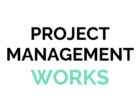Perhaps the first thing to note about project management and planning a project, in particular, is that projects never stick to the plan. Change always happens and provided you accept that, then it is really just a matter of altering the plan in a way that will allow the project to still deliver a successful outcome for the customer.
Unexpected changes can happen for a variety of reasons: different market conditions, changing budgets, altered expectations etc. and can throw the best laid plans into disarray. Schedules may need to be revised, milestones changed and new deadlines set so whilst you may not have to throw out all previous plans and start again a compete revision of the project schedule is not an uncommon occurrence.
So whether you are planning your project from the outset or totally revising your plan take a look at these fundamental factors that should be considered for every project plan.
- Get People Involved in the Planning – Don’t develop the plan in isolation – talk to those who will be doing the work, testing it and ultimately approving it.
- List & Sequence All Activities – start by simply listing everything that has to be done at a high level. Then order those activities based on interdependencies and other requirements (such as staged deliverables).
- Add the Task Detail – Once you have your high-level activities planned then add the detailed tasks required to complete each activity including criteria to determine if the task is completed successfully or not.
- Assign Clear Responsibilities – every detailed task should be assigned to an individual. If certain tasks, buy their nature, have to be assigned to a group them make sure a single individual in that group has overall responsibility for tracking and reporting progress, and problems.
- Define Milestones and Critical Tasks – these must be completed to allow progression on the project so should be specifically included on the plan with clear responsibilities for delivery defined.
- Add the Estimates & Dates – the estimated times for each task will form the baseline for measuring progress. Add a contingency but don’t expect to stick to this baseline – it will help in tracking progress and improving estimates in future projects.
- Allocate The Resources – once you know what needs to be done and how long it is expected to take then you can allocate time, money and people to the project effort.
- Define the Communication Channels – once you know the why, what, how and when of the project ensure that everyone else involved also understands what will be happening and how you can keep them apprised of progress and issues that may (will!) arise.
These are just the very basics of planning a project and might help someone with a personal project such as renovating a house but anyone interested in a career in the project management profession would do well to undertake some training in a recognised methodology such as APM PMQ, PMP or PRINCE2. There are plenty of e-learning, video and traditional project management courses available to choose from.



